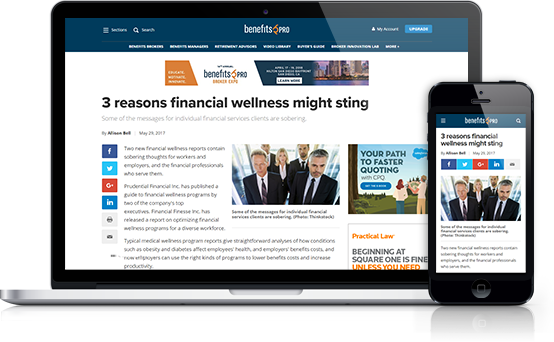While the official 2016 voluntary benefits market sales numbers won't be calculated until next year, anecdotal evidence from brokers, consultants and analysts suggests another strong year of growth.
To that end, we reached out to several stakeholders with various roles in the market. All have high expectations for next year. And all see continued momentum for consumer-driven workplace trends.
Here are some impressions on the past year and future from a diverse representation of industry players — voluntary specialists, a traditional broker, a voluntary market analytics provider, a consultant, a benefits disrupter and an industry analyst.
Recommended For You
Complete your profile to continue reading and get FREE access to BenefitsPRO, part of your ALM digital membership.
Your access to unlimited BenefitsPRO content isn’t changing.
Once you are an ALM digital member, you’ll receive:
- Breaking benefits news and analysis, on-site and via our newsletters and custom alerts
- Educational webcasts, white papers, and ebooks from industry thought leaders
- Critical converage of the property casualty insurance and financial advisory markets on our other ALM sites, PropertyCasualty360 and ThinkAdvisor
Already have an account? Sign In Now
© 2025 ALM Global, LLC, All Rights Reserved. Request academic re-use from www.copyright.com. All other uses, submit a request to [email protected]. For more information visit Asset & Logo Licensing.








